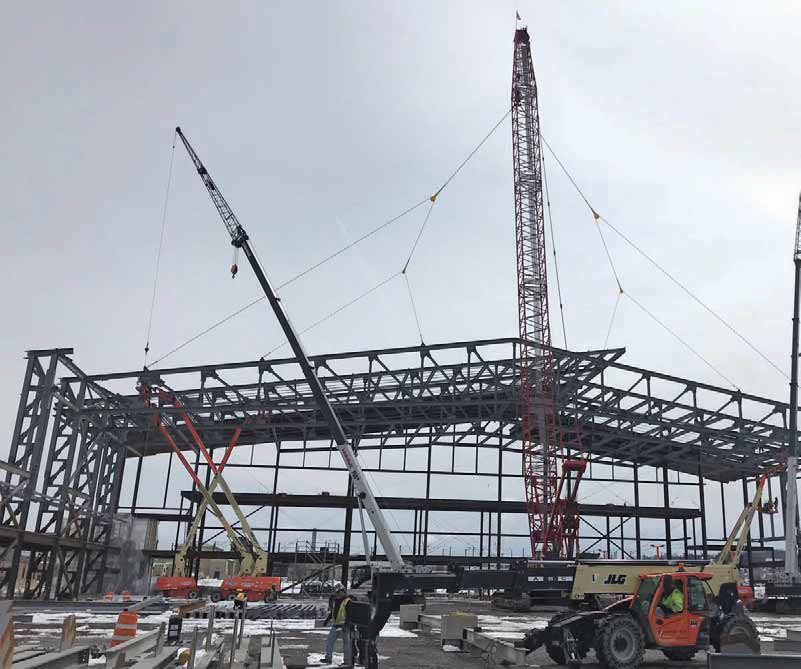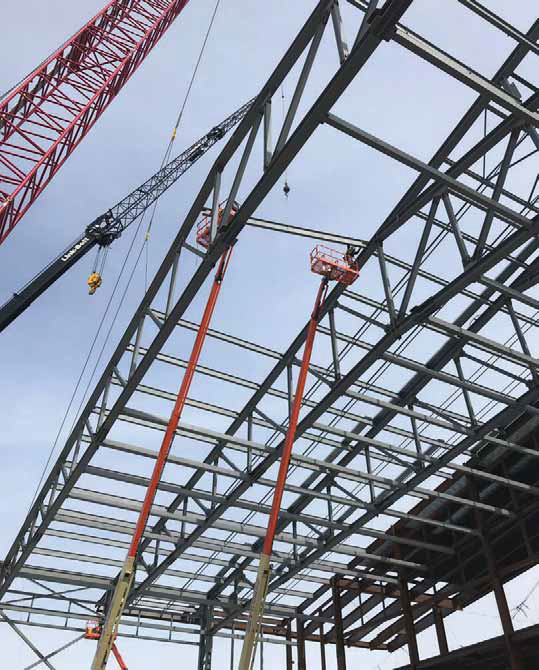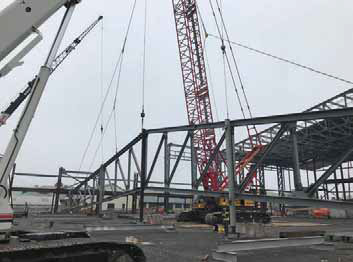Single crane lifts New York Fair trusses
17 May 2018Roof trusses for a building at the Great New York State Fair were raised by an unusual technique. Instead of using two cranes, a Sany SCC3000 was used, with a complex arrangement of rigging points and rolling blocks to spread the load.
The new Expo Center for the Fair will be an impressivelysized 136,000 square foot building and is claimed as the largest event space north of New York City between Boston and Cleveland. It will contain 110,000 square feet of flexible programming space with 4,000 retractable seats and a clear span of 250 feet.
To lift the steel trusses into place, structural engineers Ruby and Associates of Michigan provided lift engineering as well as temporary erection stability bracing and procedure services to the construction team’s fabricator, Stone Bridge Iron & Steel, Inc. HBP Joint Venture is the joint-venture firm leading the project and Christina Steel, Inc. is serving as steel erector.
“There were different possible ways to do the job,” said Chad Fox, professional engineer/structural engineer, and Ruby’s project manager. “With long span trusses, standard practice would suggest using two cranes. The erector, our client, was trying to come up with the safest and most efficient method, minimising the amount of equipment on site, so we conducted rigging analyses of ways of doing it with one crane.”
A series of analytical iterations determined the safest and most efficient rigging procedures. “We probably looked at ten different arrangements. In the end we used six attachment points, with four blocks to spread the load between them,” said Fox.
Each fully assembled truss was 253ft long. For stability during the lift, the trusses were rigged, from a single hook, via the rolling blocks to the six attachment points.
“The nice thing about using blocks is you are guaranteed that they will allow the slings to engage equally,” said Fox. Ruby’s team also designed bolt-on lift lugs for the six attachment points. These were reuseable.
After each truss had been raised, they were removed from it and transferred to the next one.
“Each truss was assembled flat on the ground on-site,” says Fox. “We designed tilt-up support frames with thrust blocks—five per truss— to anchor the lower edge of the truss as the crane tilted it to vertical at the commencement of each lift.”
Once each truss had been lifted onto its column, assist cranes inserted the infill pieces that steady them in position. “We couldn’t let go of the truss until the infill was placed,” said Fox. The assist cranes were Link-Belt TCC750s; the main lifting crane was a Chinese-built Sany SCC3000.
The Cummins-engined Sany offers 300t capacity, a basic boom length of 20m and a maximum length of boom with short jib of 93m, in which configuration the centre of the lifting hook is at 91m radius.
The choice of a Chinese crane is unusual in North America. “It was the erector’s selected crane, and it is the first time I have worked with one,” said Fox. “But we encountered no problems; so, so far, so good.”


